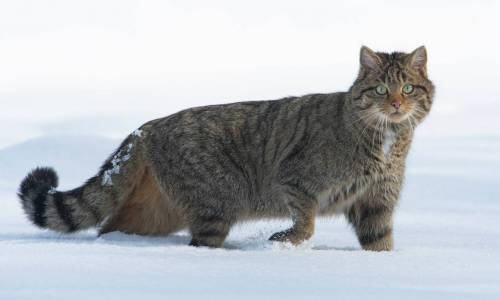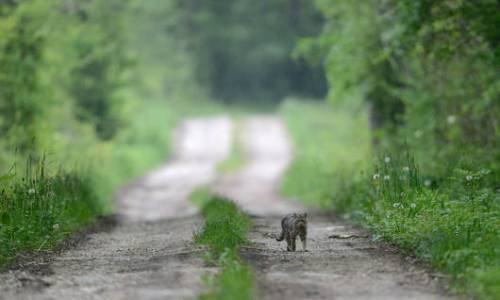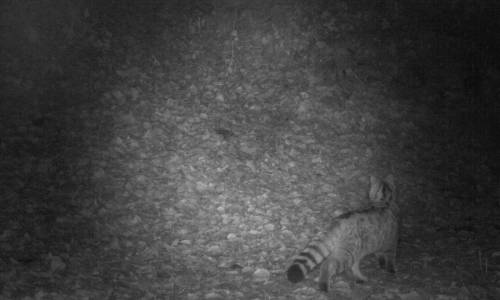
Wild Cat
Thanks to the advent of photo-trapping, there is evidence of its presence in much of the central-northern Apennines and not only in central-southern Italy as was previously believed. A shy animal, one of the rarest species of Italian mammals, it favors the wild and inaccessible habitat of the forest, with rocks and small streams.
The new map of its distribution shows, however, a very fragmented diffusion, with numerous solitary specimens and few viable populations. To the natural barriers represented by the rivers are added the artificial barriers of large roads and railways.
In the territory of the province of Pesaro and Urbino, specimens have been found in all the mountains of the Apennine chain, unexpectedly also in the Furlo and Cesane mountains. This information should be kept in mind to regulate the incidence of anthropogenic activities that can cause greater disturbance such as logging, hunting, hiking, and wandering dogs. The habits of the wild cat are still largely unknown. Solitary males tend to have a vast territory to defend and long movements to be able to reproduce whereas females are confined to a much smaller territory, waiting to receive the annual visit of the male or males, they lavish parental care during the long months they spend with their offspring. The wild cat has a brindle brown coat with four black streaks on the nape, a clear vertebral streak that goes from the base of the neck to the base of the tail, transverse streaks on the flanks that are not very defined and a rather short but club-like tail with evident black rings
well separated between them. It has a length between 45 and 80 cm, a tail of 29-40 cm, ears up to 6 cm long and a weight that can reach 8 kilograms, large yellow-green eyes and front legs with 5 nails, rear with 4. The sexual dimorphism is not very evident, noticeable only with the larger dimensions of the male, in particular of the head.
It is an obligate carnivore, almost exclusively a consumer of vertebrates, little specialized in trees and not very comfortable in the water. Dig its burrows in natural cavities or take advantage of those abandoned by badgers and
The species is particularly protected in Italy by Law no. 157 of 11 February 1992; also protected at European level under the 1979 Bern Directive and the 1992 Habitats Directive which considers it in Annex IV as a species of community interest that requires strict protection.



